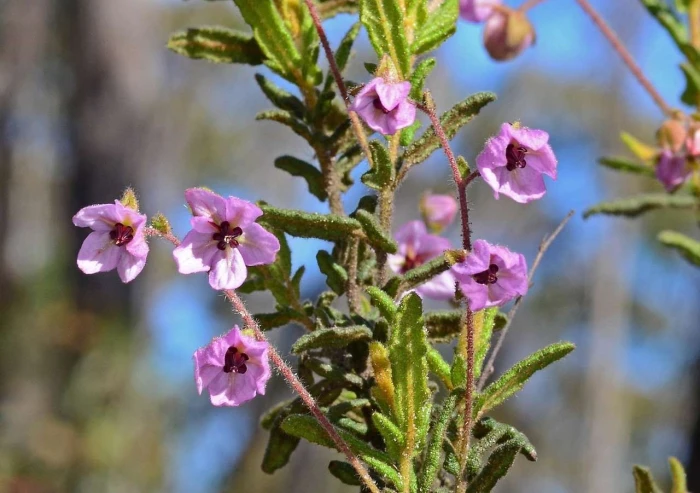Paper Flower
(Thomasia petalocalyx)
Paper Flower (Thomasia petalocalyx)
/
/

gmgoods
CC BY 4.0
Image By:
gmgoods
Recorded By:
Copyright:
CC BY 4.0
Copyright Notice:
Photo by: gmgoods | License Type: CC BY 4.0 | License URL: http://creativecommons.org/licenses/by/4.0/ | Rights Holder: gmgoods | Publisher: iNaturalist | Date Created: 2012-10-17T15:33:29Z |

























Estimated Native Range
Climate Requirements
| • Precipitation | 11" - 50" |
| • High Temp. | 68°F - 94°F |
| • Low Temp. | 32°F - 50°F |
Summary
Thomasia petalocalyx, commonly known as Paper Flower, is a shrub native to a variety of habitats including forest understories, woodland clearings, and coastal heathlands in southern Australia, particularly in Western Australia, South Australia, and Victoria. This plant typically grows to a height of 1.5-4.9 feet (0.5-1.5 meters) and spreads 1.5-6.7 feet (0.5-2 meters) wide. It features star-shaped, hairy new growth and oblong to egg-shaped leaves with wrinkled edges. The mauve, cup-shaped flowers bloom near the branch ends, primarily in spring and summer, adding a distinctive ornamental quality to the plant.
The Paper Flower is appreciated for its unique flowers and textured foliage, making it a desirable addition to native plant gardens and informal shrub borders. It is relatively low-maintenance, requiring minimal care once established. In cultivation, it prefers well-drained soils, tolerates a range of soil types including sandy and loamy, and requires moderate watering. It thrives in full sun to part shade conditions. While not commonly reported to suffer from serious pest or disease problems, it can be susceptible to root rot in poorly drained soils. Gardeners should be aware that this plant may not tolerate heavy frost and should be protected in colder climates.CC BY-SA 4.0
The Paper Flower is appreciated for its unique flowers and textured foliage, making it a desirable addition to native plant gardens and informal shrub borders. It is relatively low-maintenance, requiring minimal care once established. In cultivation, it prefers well-drained soils, tolerates a range of soil types including sandy and loamy, and requires moderate watering. It thrives in full sun to part shade conditions. While not commonly reported to suffer from serious pest or disease problems, it can be susceptible to root rot in poorly drained soils. Gardeners should be aware that this plant may not tolerate heavy frost and should be protected in colder climates.CC BY-SA 4.0
Plant Description
- Plant Type: Shrub
- Height: 1.5-5 feet
- Width: 1.5-6.5 feet
- Growth Rate: Moderate
- Flower Color: Pink
- Flowering Season: Spring, Summer
- Leaf Retention: Deciduous
Growth Requirements
- Sun: Full Sun, Part Shade
- Water: Medium
- Drainage: Medium, Fast
Common Uses
Border Plant, Butterfly Garden, Low Maintenance, Rock Garden, Showy Flowers
Natural Habitat
Forest understories, woodland clearings, and coastal heathlands
Other Names
Common Names: Thomasia
Scientific Names: Thomasia petalocalyx, Thomasia macrocalyx
GBIF Accepted Name: Thomasia petalocalyx